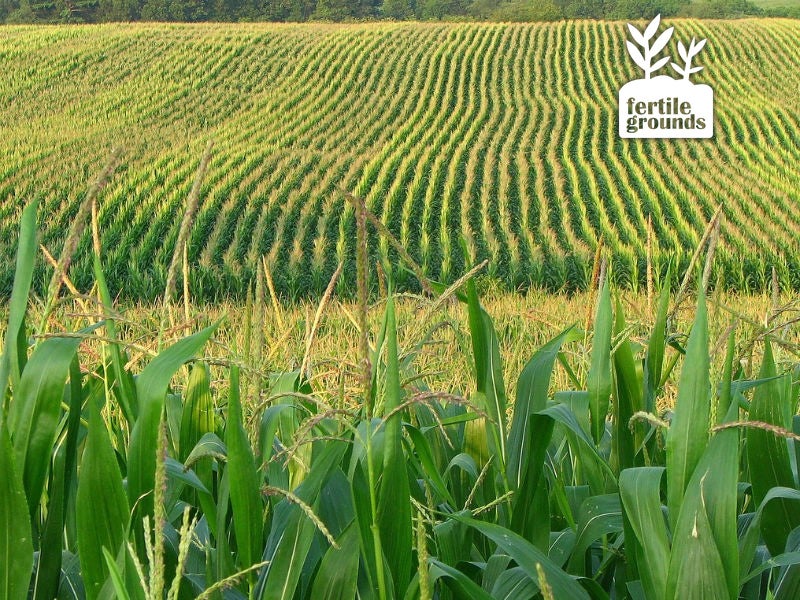The Major Food Waste Problem You Haven't Heard About
America wastes millions of acres of land through inefficient food production.

This page was published 8 years ago. Find the latest on Earthjustice’s work.
Food waste has gotten a lot of attention lately, and rightly so. In the United States, we trash up to 40 percent of our post-harvest food supply. But there’s another, more insidious form of waste that plagues our food system—and it’s baked right in.
We devote more than 100 million acres of U.S. land to growing crops that don’t contribute efficiently to our food system, and in some cases, pose an outright threat to our health and the environment. Federal agriculture policies have a powerful impact on decisions made at the farm level. We need government policies that support the use of farmland for nutritious food—as well as conservation and climate protection—not for wasteful products.
Revising how the federal Farm Bill program subsidizes or otherwise supports certain crops and practices, for instance, could change which crops farmers choose to grow and how they grow them, reducing waste of all sorts.
Conventional beef is a prime example of the inefficiencies in our current food production system. According to the U.S. Department of Agriculture (USDA), about half of U.S. cropland is used to grow feed for animals in industrial livestock facilities, better known as factory farms. In the 12 states of the Midwestern “Corn Belt,” 70 percent of planted acres are devoted to just corn or soy. But the average American cornfield feeds only three people per acre, making it less productive than farms in Bangladesh.
That’s because feeding grain to animals and animals to humans is a highly inefficient way to feed people. According to industry sources, most feedlots require about six pounds of grain to increase a cow’s weight by one pound. Then, less than half of the cow becomes edible meat. In the end, it takes more than 14 pounds of grain to produce one pound of beef sold in a grocery store.
That’s about as efficient as filling the gas tank of a mega-SUV that only gets two or three miles to the gallon, compared to a car getting 30 mpg. If you fed the same amount of grain given to livestock to humans instead, you could support 840 million people. Nutrition science suggests we should move in that direction too: The American Heart Association recommends Americans eat less red meat to protect our health.
Another major source of waste is the prevalence of processed foods in the American diet. A recent study estimated that 75 percent of the average American’s calories come from processed foods, which are largely made from corn, wheat, soy and some animal products. Corn and soy are among the most heavily subsidized crops in the country. This “commodity-based diet” lacks essential nutrients present in whole and minimally processed foods—explaining how some folks in the U.S. can be both undernourished and over-weight.
Despite the lack of nutritional benefit, we continue to devote valuable resources to creating processed foods. Based on Earthjustice’s analysis of USDA figures, about 2.5 million acres of corn are destined to become high-fructose corn syrup, mostly for use in soft drinks. Another 2 million acres go to sugar beets and sugar cane. In total, we use an area of fertile farmland the size of New Jersey just to grow sweeteners. Given that sugar-sweetened beverages have been linked to obesity, diabetes and heart disease, this use of millions of acres of land isn’t just wasteful—it’s also dangerous.
Ethanol production is another good example of agricultural production gone wrong. We use about 27 million acres of U.S. land to produce corn for ethanol, but the amount of corn it takes to fill a single 25-gallon gas tank with ethanol is enough to feed one person for a year. On a global scale, the amount of corn the United States uses to make ethanol could feed 500 million people. And most studies show that corn ethanol doesn’t provide significant climate benefits compared to gasoline. Turning corn into ethanol may be convenient, but like using furniture for firewood, it’s not a smart long-term strategy.
To date, agricultural research and policy have largely focused on increasing the production of tons of food per acre of land. But much of this yield is wasted on foods we should be eating less of, not more. We should instead focus on producing more nutrition per acre, more sustainably. We must re-imagine ways to use our land and other resources more efficiently, and change government policies that support an agricultural model that uses far too much land to produce food and fuel that harms our health and environment.
This blog was adapted from a recent article I wrote in The Environmental Forum. The full text is available for Environmental Law Institute members here.
About this series
Fertile Grounds is a blog series that examines the challenges and opportunities in ensuring access to healthy, sustainable and affordable food for all. We talk about the entire lifecycle of food—from seed selection and planting to consumption and disposal—because there is potential for improvement throughout. We’re informed by the expertise of our many clients and allies and by Earthjustice’s years of work to ban harmful pesticides, encourage sustainable farming methods, reduce pollution, support farmworker justice and promote a healthy relationship between farmers and communities.
Earthjustice’s Sustainable Food and Farming program aims to make our nation’s food system safer and more climate friendly.